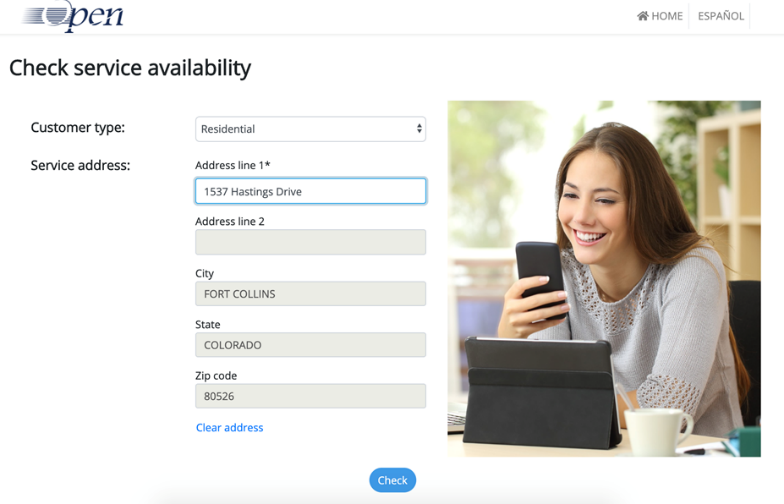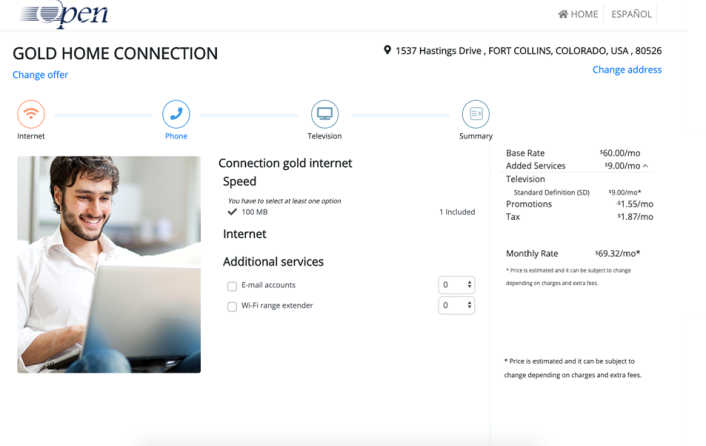Smartflex’s customer self-service portal provides great opportunities for service providers looking to offer non-traditional products and services on a par with leading e-commerce retailers.
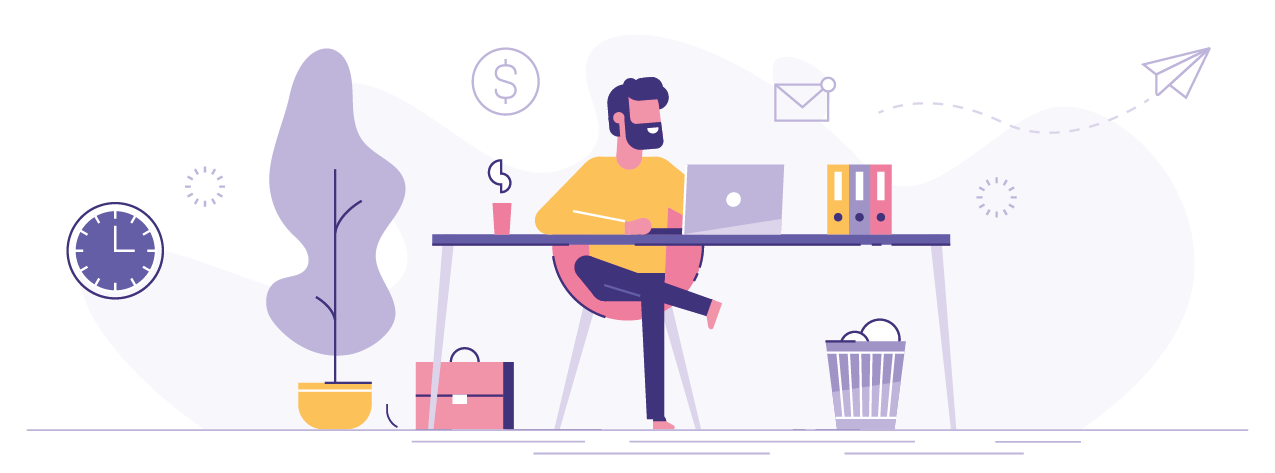 Providing options for customers to pay bills, view their consumption, make requests, and reach out to their service provider does not represent a competitive differentiation for utilities anymore. Formerly groundbreaking, these features have drifted apart from the innovation front, becoming commoditized capabilities expected from any given utility customer self-service portal.
Providing options for customers to pay bills, view their consumption, make requests, and reach out to their service provider does not represent a competitive differentiation for utilities anymore. Formerly groundbreaking, these features have drifted apart from the innovation front, becoming commoditized capabilities expected from any given utility customer self-service portal.
To catch up with ever-increasing customer expectations and enhance their value offer, these organizations are expanding into new lines of business with non-traditional products and services, such as broadband and telecommunication bundles, allowing them to capitalize on government incentives and remain financially sustainable in an industry in which the traditional supply model is being challenged by prosumers, decolonization, and energy efficiency goals (1). By mirroring the Customer Experience (CX) created by digital-native retailers specialized in e-commerce, service providers can promote these new services while keeping a customer-centric mindset that allows them to meet increasingly demanding expectations of digital-first individuals accustomed to ubiquitous offers and communications, 24X7.
However, these companies struggle to find the right technology solution to present an offering on a par with leading e-commerce providers, as the typical approach presented is to integrate e-commerce tools to their legacy system landscape. Consequently, they face complex integration requirements and an increased Total Cost of Ownership (TCO), undermining the return on investment, performance, and typically a less than optimal customer experience. Moreover, the synchronization efforts required make the outcome subpar in terms of the fragmented CX derived from gaps in the integration of systems based on different architectures.
With that in mind, Smartflex’s Customer Self-Service (CSS) portal has transcended the conventional features included in these portals to help utilities increase customers’ enrollments for non-traditional products and services while improving engagement and overall experience. Through an intuitive e-commerce-like interface, utilities’ customers can navigate the company’s portfolio, select the best-fit offer according to their needs and ability to meet technical pre-requisites (such as an offer that is based on a certain bandwidth available) , register and schedule the orders needed to fulfill the service, all within a few clicks. In this model, the CSS portal performs seamlessly as an integral part of the Smartflex’s holistic solution, creating cohesive end-to-end customer journeys that could begin with a request in the portal and continue with the activities carried out in the Customer Information System (CIS) to handle customer account and billing information, and the field activities managed in the Mobile Workforce Management (MWM) to establish the service.
Let’s take a look at an example of a customer contracting the broadband internet service.
1. Check service availability.
The first step is to verify if the service to be acquired is available at the customer’s location. By filling out a few fields like the address or zip code, the portal retrieves all the offers that are technically feasible according to the geolocalization information.
2. Select the offer.
The customer selects the desired offer from the range of options available. To deliver more value, Smartflex’s holistic approach allows the management of service bundles with more than one service to create even more enticing offers.
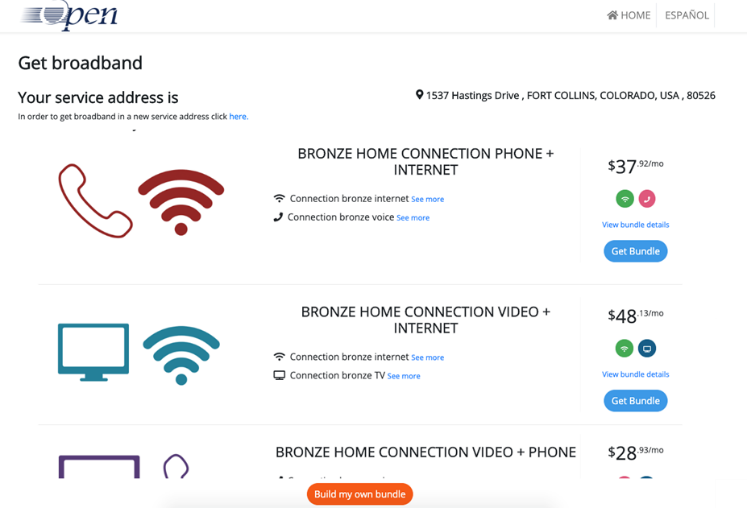
3. Check the offer details.
Once the offer is selected, the customer can view relevant service information, such as price, internet speed, and additional features like email accounts. If there are several services bundled in the offer, the customer can check the information for each of them. Likewise, a summary is presented at the end.
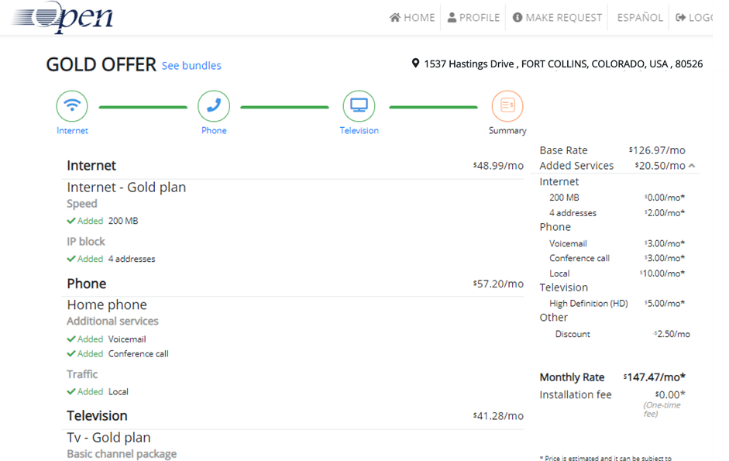
4. Register.
The online acquisition of new services is available for both new and already existing customers. For new customers, the creation of an account is possible directly from the portal by filling out basic personal information. For existing customers, it is as simple as finding the account to which the new service will be associated.
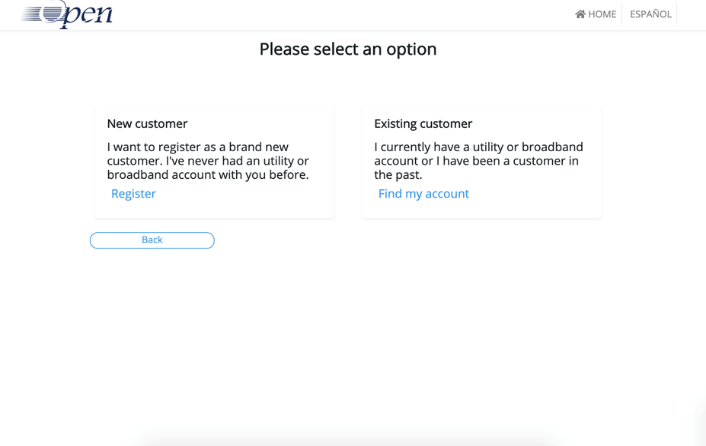
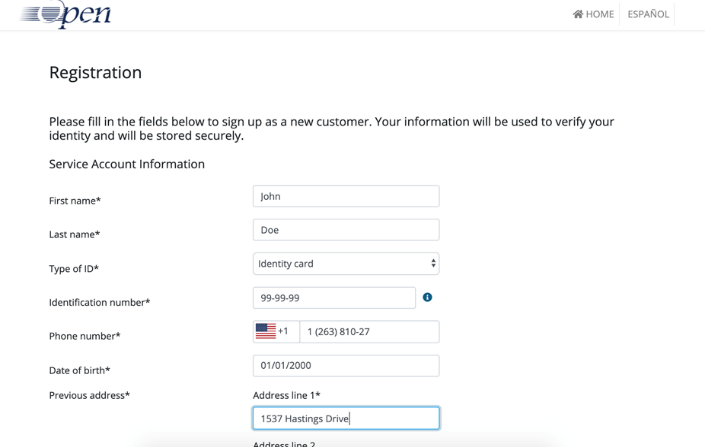
5. Confirm order.
After the customer completes the registration, an order confirmation summary is presented. This summary includes information about the customer, the price and the characteristics of the product/service or bundle.
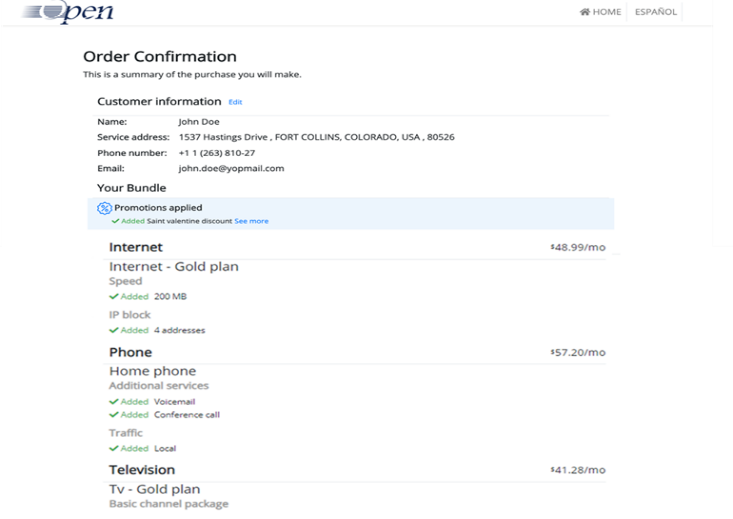
6. Schedule appointment.
With the order confirmed, the customer can schedule an appointment to perform the installation and device configuration needed for the supply of the service. Using a friendly calendar-driven interface, the customer selects the most convenient time and date for the appointment. Once selected, the customer clicks the confirm button to book the appointment.
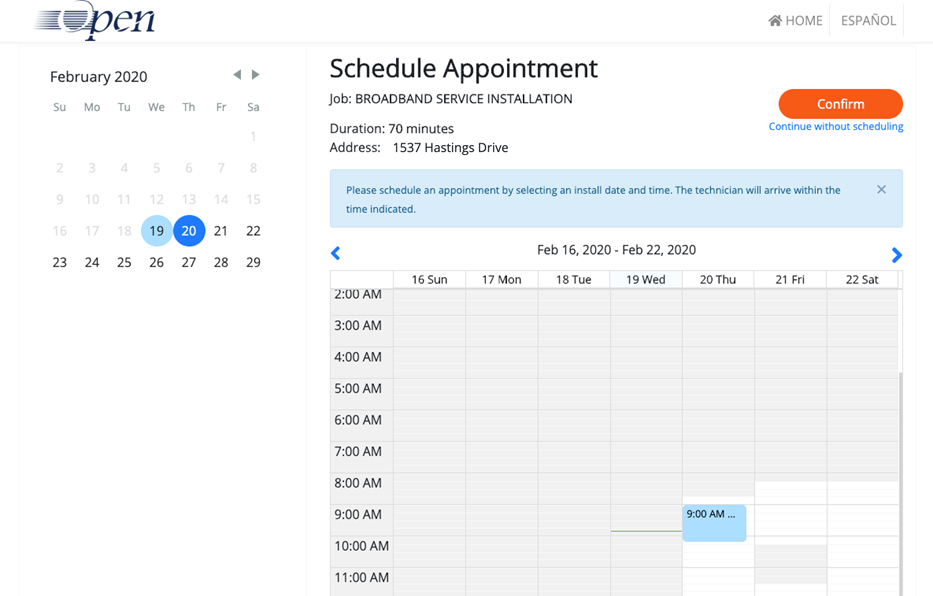
7. Receive order confirmation.
Finally, the portal shows a message confirming the success of the order. Additionally, an email with the details of the transaction is sent to the customer. From this screen, the customer can be redirected to the home page to continue exploring other self-service options, and review relevant information and promotional content posted by the utility.
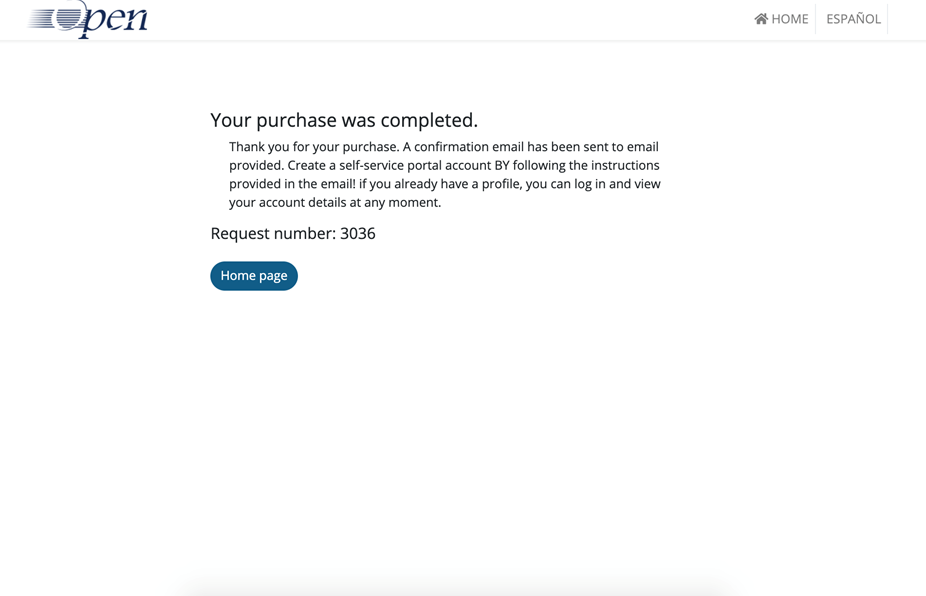
By following these simple steps, customers can sign up for new products offered by their service provider easily accessible via their web or mobile device. Furthermore, the buying journey depicted above performs seamlessly with other relevant customer journeys like the billing and payment process, through which the customer settles all charges related to the installation and usage of the service, and the transfer journey, through which the customer can change the service supply to a new address, all of which is transacted in Smartflex’s CSS portal.
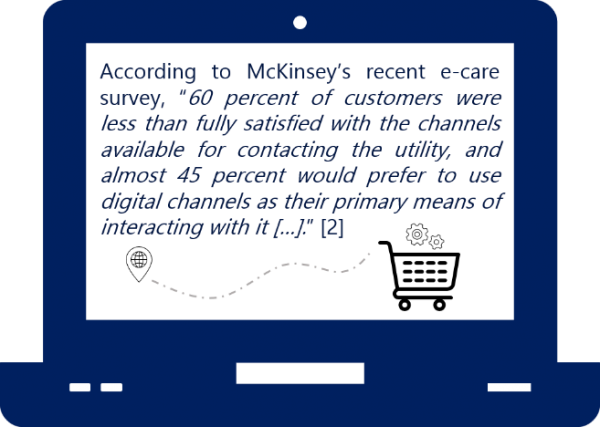
There are many benefits to be obtained by both service providers and customers from the e-commerce features included in the CSS portal.
On the utility’s side, being able to offer new products and services via a new sales channel improves key performance indicators like customer onboarding, which has a direct effect on revenue. Additionally, companies can optimize touchpoints and reduce the overhead of traditional channels like brick-and-mortar branch offices and call-centers, which are not only more costly but also report less satisfaction and are being eliminated as digital interactions become more relevant.
Likewise, customers benefit greatly from having a practical channel through which several transactions can be done in a familiar environment. Thus, customers feel more satisfied, stay engaged, and become loyal to the brand due to a heightened perception of the service provider as an innovative, leading-edge organization capable of delivering efficient and satisfying customer experience, all possible through the integrated Smartflex CSS platform.
(1) Gartner, Inc. (2018). Strategic Roadmap for Utility Customer Information Systems. https://www.gartner.com/en/documents/3893466/strategic-roadmap-for-utility-customer-information-system


